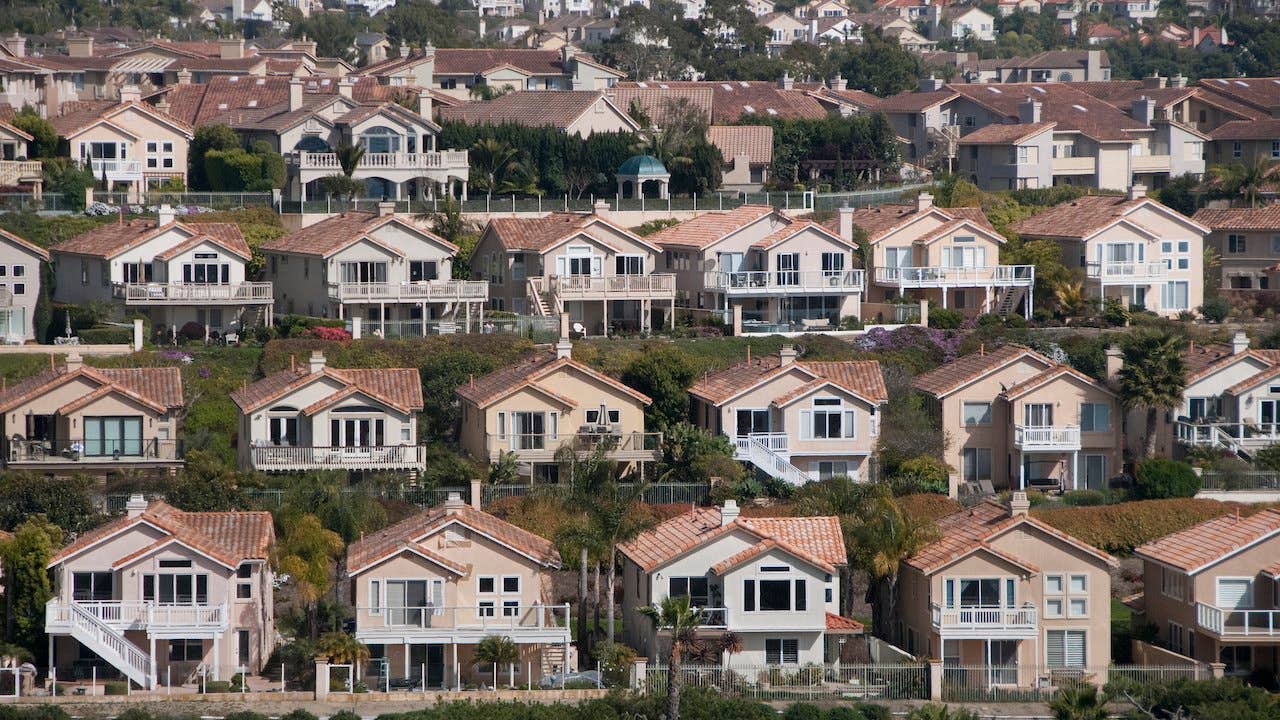Housing supply squeeze finally begins to ease

During the record-breaking housing boom of the past two years, a drastic under-supply of homes for sale has bedeviled buyers and delighted sellers. Now, the squeeze is easing — a shift that reflects a much-anticipated cooling of the white-hot housing market.
A normal market would be a wonderful thing for everybody.
— Christina Pappas Vice president at Keyes Co. Realtors in Miami and president of the Florida Realtors
The abnormal conditions of the past two years have been brutal for buyers. Because the demand for homes outpaced supply by such a wide margin, buyers have faced month after month of steep price increases. In desperation, many home shoppers waded into bidding wars and even waived contingencies for appraisals and inspections.
Housing economists measure the stockpile of homes for sale in months of supply. In January 2022, the number was just 1.6 months, a record low, according to the National Association of Realtors. The figure has ticked up each month since, reaching 1.7 months in February, 1.9 months in March and 2.2 months in April. In July, the number rose all the way to 3.3 months.
The real estate rule of thumb says that a balanced market — one that favors neither buyers nor sellers — is characterized by five to six months of supply. So 3.3 months is still a seller’s market to be sure. But the picture looks much less skewed today than it did a few months ago.
Are we in a ‘housing recession’?
As the housing market finally cools, economists and financial reporters are throwing around a new phrase: “housing recession.” Are we in one? Yes and no, says Lawrence Yun, chief economist of the National Association of Realtors.
“We are in a housing recession in terms of sales and housing starts, but we are definitely not in a housing recession in terms of prices or how homeowners feel,” Yun told reporters on August 18.
Many American homeowners are sitting on top of huge equity gains after two years of a record-breaking run for home values.
Existing-home sales fell in July for the sixth consecutive month, according to NAR’s most recent numbers, reaching a seasonally adjusted annual rate of 4.81 million. Sales were down 5.9 percent from June and 20.2 percent year-over-year.
Meanwhile, home builders have dialed back housing starts. “The builders are naturally cautious,” Yun said. “They’re cutting back on production.”
Home prices also softened a bit. The median existing-home price was $403,800 in July, up 10.8 percent from July 2021 but down from the record of $413,800, set in June 2022.
Why the housing inventory shortage is easing
The inventory of homes for sale has expanded in part because home prices have been soaring out of reach, and thereby tamping down demand. The median price of an existing home sold in the U.S. has been above $400,000 for three straight months.
Price increases, combined with a recent run-up in mortgage rates, have created affordability challenges for buyers. The average cost of a 30-year mortgage was just 3 percent in August 2021, according to Bankrate’s national survey of lenders. By mid-May, the number had soared to 5.45 percent. “That is causing people to pause,” says Christina Pappas, vice president at Keyes Co. Realtors in Miami and president of the Florida Realtors.
Yun says the jump in mortgage rates has frozen some sellers in place. Homeowners with 3 percent mortgage rates don’t want to give up their historically great deals, creating what he calls a “lock-in effect.”
“Perhaps there are some people who are locked into those low rates and do not want to list their homes,” Yun says.
Andrew Sachs, a Keller Williams broker in Newtown, Connecticut, says he is noticing signs of a cooler market. “There are fewer bidding wars. Maybe the seller gets asking price, but they don’t get eight bids that push it over asking price,” he says. “A seller can’t ask for the world and get it [anymore], so everything is going to be more negotiable.”
For the past two years, buyers who wanted to close on a deal had been all but forced to make aggressive bids on multiple properties. Now, the pendulum might be inching back in their favor. “We are seeing some pockets of normalization,” Sachs says. “The more people who can buy homes, the healthier overall the economy will be.”
A shifting supply-and-demand equation
During the first two years of the pandemic, home builders said they couldn’t build fast enough to meet demand. Those conditions have since changed. Even so, there’s still no glut of homes for sale, for a few reasons:
- Builders are still unable to build quickly. Homebuilders pulled way back after the last crash, and they have never fully ramped up to pre-2007 levels. Now, there’s no way for them to buy land and win regulatory approvals quickly enough to quench the current housing demand. While they are building as much as they can, the massive suburban developments that commonly popped up before 2010 are now rare.
- Demographic trends are creating new buyers. There’s strong demand for homes on many fronts. Many Americans who already owned homes decided during the pandemic that they needed bigger places. Millennials, a huge group, are now in their prime buying years. And Hispanic buyers are a young, growing demographic also keen on homeownership.
- The usual supply spigot is turned off. In a counterintuitive result of the hot market, homeowners aren’t eager to sell, because they know they’ll have to do battle to find another property. What’s more, there are almost no foreclosures these days, removing a small but reliable source of homes from the market.
Bottom line
The longstanding housing shortage is finally easing, with inventory numbers ticking up from record lows. While some claim we are in a “housing recession,” not all experts agree. Home prices remain high, but they are starting to soften, and existing-home sales are falling — all of which is helping the housing market inch back toward balance.






